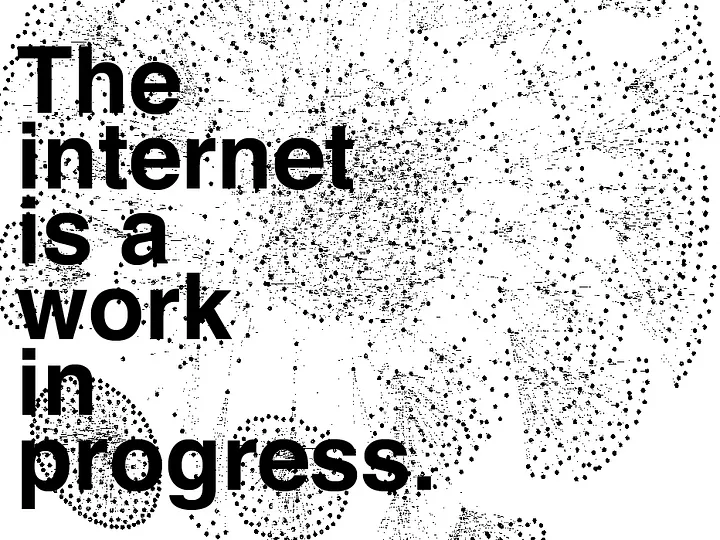Make engaging dApps!
By Hira • October 14, 2024

93% of users churn on web3. Is churn rate also a problem for your dApp? If yes, read on!

Since the dawn of the internet, humans have strived to enhance the web experience and make it an engaging, enjoyable experience. First, we had static websites where every person in the world saw the same thing on the internet.
Then, to improve it, we moved on to creating profiles that personalized a website for each user by adding their details and preferences. Alongside profiles came cookies that tracked the activities of users across the internet. Based on the user activity, each person’s personas became further enriched and the web experience became further personalized with functionalities like content recommendations, personalized social feeds, tailored messaging, relevant advertisements, etc.

Today, a modern user not only expects a personalized experience, but 71 percent get frustrated when this doesn’t happen. The personalization features can make or break any website.
The better your website’s personalization, the more the user retention rates.
The Advent of Web3
For the past decade, we have been reimagining the internet, making it decentralized and free from control, censorship, or manipulation. The web3 community has been developing decentralized apps (dApps) and has been trying to get adoption.
However, they haven’t been quite successful there. The experience on web3 platforms isn’t exactly fun and the user churn rates across all dApps are a dismal 93%.
When a person lands on a web3 dApp for the first time, the decades-long context of the person that he or she created in the web2 world is all gone and they have to start from scratch on the web3 platform. On average, a new website only has 10 seconds to capture a new user’s attention before they churn. Figuring out how to connect a wallet alone takes more time than that and even after the connection, there is no user context attached to the wallet so every person on the dApp has exactly the same experience.
When it comes to experience, web3 is synonymous to web1 as there is no personalization.
This leads to the cold start problem for dApps where not only is it difficult for the users to acquire new customers but also to retain existing ones. So, how big a problem is it really that there is no personalized user experience on dApps? Let’s take a look at the stats.
-
- 71% of consumers express some level of frustration when their experience is impersonal
-
- 80% of consumers indicated they would be more likely to purchase from a brand that provides a personalized experience.
-
- 80% of consumers were more likely to do business with a company that offered personalized experiences.
-
- 31% of consumers wished their shopping experience was more personalized than it currently was.
-
- 91% of consumers are more likely to shop with brands that provide relevant offers and recommendations.
-
- 44% of consumers who were satisfied with personalized service become repeat customers
From the stats, it’s quite clear that people expect personalization in their online experiences. But, personalization cannot happen without having some contextual data of users, which brings the question of privacy.

So, can personalization and privacy co-exist?
The big question is, would users want to share their data for personalization? Let’s take a look at the stats once again
-
- 52% of consumers would share personal data in exchange for product recommendations
-
- 64% of consumers are happy with retailers to save personal preferences if more personalization is offered
-
- 90% were comfortable with companies collecting data if it led to a personalized experience.
Hmmm, that’s quite a conundrum, isn’t it? We live in contradictory times. The modern consumer demands increased privacy, tightened data controls, and the right to be forgotten. That’s easily deliverable until you contrast those demands with their expectations for tailor-made content, bespoke product recommendations, and uber-personalization. Add to it the fact that people are also okay with sharing some of their data if they believe they get a better experience for it.
So, what’s the best possible way to do so in web3 keeping in mind that a web3 wallet has no contextual data attached to it? And is it possible to do it while respecting people’s privacy?
Well, there are a few approaches to balance privacy and personalization.
NFTs as a zero-party data strategy
For the past 3 years, NFTs have been experimented with in many different ways. One of them is for loyalty programs by brands using zero-party data strategies.
Zero-party data strategy is when users consensually share their data with a party in exchange for some value through forms, questionnaires, polls, etc.
So, brands have been asking users to give their data with their consent directly to the brands (zero-party data strategy) and get NFTs in return which will allow them to get discounts, promos, and other benefits.
This strategy makes sense but is extremely limited. Going to each website and filling out form after form for freebies is not only frustrating but cannot scale. Moreover, how much data can you fill out? Humans produce 146 GB of digital footprint each day which just cannot be transferred to a single form. Adding wound to the salt, NFTs are publicly reflected in your wallet, which isn’t exactly adhering to the concept of privacy.
So, are there any better options or web3 is doomed to be impersonalized and boring forever? What else is out there?
The Better Zero-Party Data Strategy with Self-Sovereign Identity

What if instead of filling out forms again and again and getting very little personalization and benefits in return, we could have all our data in a data backpack, that we take with us on any website as we travel across cyberspace and plug it in on that website to be used for personalization. We decide when, how, and where that data is used.
“Personalization and privacy can only co-exist in the future with a zero-party data strategy.” — Scott McNealy, founder at Sun Microsystems
With technological standards like Self-Sovereign Identity, not only is this possible, but is also being done in projects.
One such example is the plurality network which allows dApps to get contextualized user information that helps them to personalize user experience on their website, without needing to store the data.
We could never bring the next billion users to web3 without giving them at least the same level of user experience as on the internet today.



